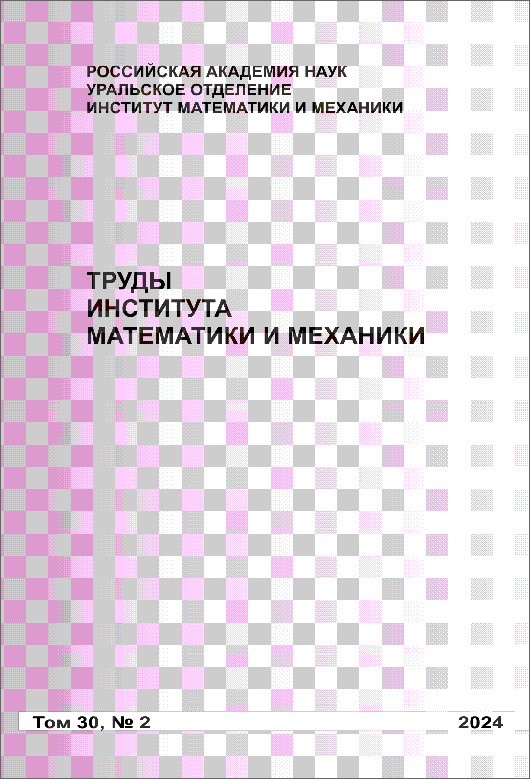|
Codes in Shilla distance-regular graphs
I. N. Belousovab
a Institute of Mathematics and Mechanics, Ural Branch of the Russian Academy of Sciences, Ekaterinburg
b Ural Federal University named after the First President of Russia B. N. Yeltsin, Ekaterinburg
Abstract:
Let $\Gamma$ be a distance-regular graph of diameter $3$ containing a maximal 1-code $C$, which is locally regular and perfect with respect to the last neighborhood. Then $\Gamma$ has intersection array $\{a(p+1),cp,a+1;1,c,ap\}$ or $\{a(p+1),(a+1)p,c;1,c,ap\}$, where $a=a_3$, $c=c_2$, and $p=p^3_{33}$ (Juri$\check{\mathrm{s}}$i$\acute{\mathrm{c}}$, Vidali). In the first case, $\Gamma$ has eigenvalue $\theta_2=-1$ and the graph $\Gamma_3$ is pseudogeometric for $GQ(p+1,a)$. In the second case, $\Gamma$ is a Shilla graph. We study Shilla graphs in which every two vertices at distance 2 belong to a maximal $1$-code. It is proved that, in the case $\theta_2=-1$, a graph with the specified property is either the Hamming graph $H(3,3)$ or a Johnson graph. We find necessary conditions for the existence of $Q$-polynomial Shilla graphs in which any two vertices at distance 3 lie in a maximal 1-code. In particular, we find two infinite families of feasible intersection arrays of $Q$-polynomial graphs with the specified property: $\{b(b^2-3b)/2,(b-2)(b-1)^2/2,(b-2)t/2;1,bt/2,(b^2-3b)(b-1)/2\}$ (graphs with $p^3_{33}=0$) and $\{b^2(b-4)/2,(b^2-4b+2)(b-1)/2,(b-2)l/2;1,bl/2,(b^2-4b)(b-1)/2\}$ (graphs with $p^3_{33}=1$).
Keywords:
distance-regular graph, graph automorphism.
Received: 25.12.2017
Citation:
I. N. Belousov, “Codes in Shilla distance-regular graphs”, Trudy Inst. Mat. i Mekh. UrO RAN, 24, no. 2, 2018, 34–39; Proc. Steklov Inst. Math. (Suppl.), 305, suppl. 1 (2019), S4–S9
Linking options:
https://www.mathnet.ru/eng/timm1520 https://www.mathnet.ru/eng/timm/v24/i2/p34
|

| Statistics & downloads: |
| Abstract page: | 170 | | Full-text PDF : | 54 | | References: | 48 | | First page: | 2 |
|




 Contact us:
Contact us: Terms of Use
Terms of Use
 Registration to the website
Registration to the website Logotypes
Logotypes









 Citation in format
Citation in format 